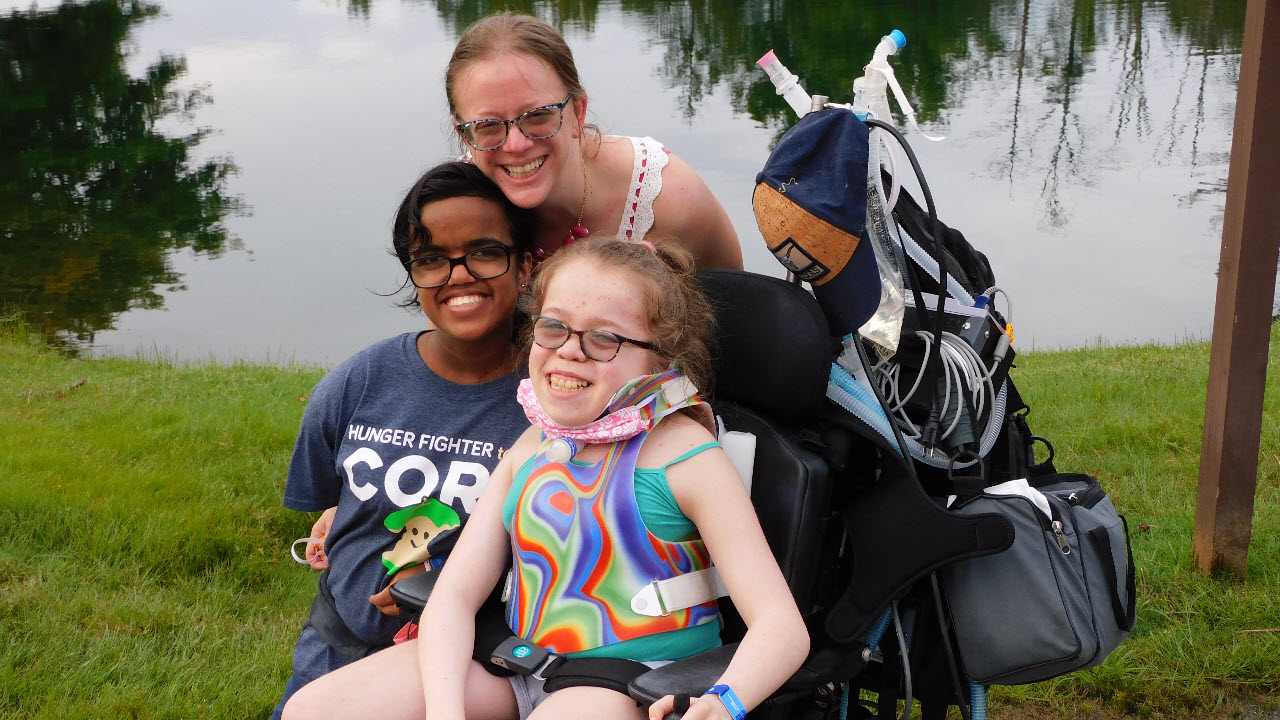Stories
How U.S. Bank built a world-class digital accessibility practice
We’re creating an industry-leading experience for people with disabilities.
For Heather Lee, it’s personal.
At work, Lee is a user experience architect on the digital accessibility team at U.S. Bank. At home, she’s a mother of two teenage daughters, both of whom have disabilities.
In both roles, she sees her responsibilities as one and the same.
“Accessibility is a hat I wear 100% of the time,” Lee said. “I don’t get to take it off. And that’s where my passion comes from. I see every inaccessible curb and every web page that doesn’t display alt text. The work we do impacts so many people in their everyday lives, and that’s why I’m so proud of it – I see the impact of it every day.”

Lee’s team is responsible for a straightforward but monumentally important task at U.S. Bank: Making sure that every single digital product that a customer or employee touches is equally usable by all. That anyone with low vision, a hearing impairment, loss of physical mobility or cognitive delay – whether permanent, situational or temporary – is able to check their balance, use mobile check deposit, send $20 to a friend for their share of happy hour or anything else just the same as anyone else.
“At its core, digital accessibility is about one foundational thing – inclusion,” said Matthew Luken, who leads the digital accessibility design team. “Nobody is left out. You’re able to serve any customer and you’re able to hire any employee and put them in a position to thrive. And when we create fully and directly for people with accessibility needs, there’s this wonderful thing that happens when we add new capabilities: it makes the experience better for everyone who uses the product.”
But building the framework to make that philosophy a reality is no small task. It requires buy-in across the company, as well as a set of accessibility champions to advocate for it. Which is why what’s taken root and grown at U.S. Bank over the past few years has been recognized as a model of success to emulate, garnering a slate of accolades and awards along the way.
“Accessibility is important to us, not because we have to do it, but because it’s the right thing to do,” said Lance Thornswood, U.S. Bank’s head of design. “It aligns so well with our core values as a company. And we know we’re doing something right, because lots of companies are reaching out and asking us how they can replicate what we have to improve their own experiences.”
The approach
The digital accessibility team plays a vital role in the creation of digital experiences at U.S. Bank by advising product teams, advocating for inclusive design, and testing for defects. That means ensuring accessibility principles are incorporated throughout the whole project lifecycle, and critically important, that it happens from the very beginning of the design process – not as an afterthought or add-on. That includes collaboration with customers who have disabilities themselves, following a motto that says: If you’re going to make something for someone, make it with them.
U.S. Bank had taken accessibility seriously, but a new approach in 2018 created a dedicated function within User Experience that allowed teams to fully consider accessibility as part of the design process. Teams flourished and the benefits of inclusive design became apparent. So the bank expanded it even further across the company, and the size of the accessibility team has grown accordingly, from several people to now dozens – a sign of the importance and scope of the work. A number of employees on the team self-identify as having a disability themselves, or, like Lee, are close to someone who does.
“It definitely drives the urgency and the passion,” Lee said.
“At U.S. Bank, we approach accessibility much in the same way we do for all our digital creation,” said Gareth Gaston, chief digital officer for platforms and capabilities. “Everything we deliver must be simple, powerful and useful for our customers – and it has to be done right the first time. Accessibility is just as foundational to us as delivering new features that work flawlessly and navigation that is easy for customers to use.”
Signs of success
The industry has taken notice of this leading approach. In March, the team was honored with the Most Diverse Adoption of Accessibility Award by Deque for its efforts in engaging stakeholders across U.S. Bank to build the program. And at the 2021 Axe-con Digital Accessibility Conference – the largest assembly of accessibility professionals ever with 17,000 attendees registered – U.S. Bank’s presentation was the most-attended in its track.
The team has become a destination for top talent, with the National Organization on Disability (NOD) honoring U.S. Bank as a 2021 Leading Disability Employer and Disability:IN naming U.S. Bank a 2021 Best Place to Work for People with Disabilities, scoring 100% on the Disability Equality Index for the fourth consecutive year. And in May, U.S. Bank was one of 22 leading companies cited by Forrester Research in its digital accessibility report, which “highlights companies getting it right – with a focus on how to progress and establish a solid accessibility practice.”
Among the things highlighted in that Forrester report is Lee’s favorite part of her job – the bank’s Accessibility Champion program, in which employees can nominate peers to be recognized for their efforts to advocate for accessibility. Lee manages the program, and to date, more than 250 employees have been honored from all across the company.
“It speaks to exactly the kind of culture we have built here, which is something to be really proud of,” Lee said. “And we’re going to keep the momentum going – because there’s still so much more to do.”